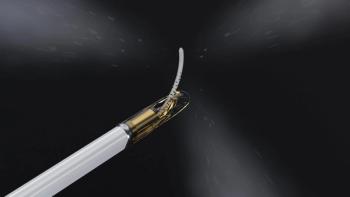
Supplemental Ultrasound More Costly Than Effective
Routinely adding ultrasound to screening for breast cancer for women with dense breasts is not cost-effective.
Supplemental ultrasonography screening for women with dense breasts would substantially increase costs while producing relatively small benefits, according to a study published in the
Researchers from the United States and the Netherlands sought to evaluate the benefits, harms, and cost-effectiveness of supplemental ultrasonography screening for women with dense breasts. The outcome measures included breast cancer deaths averted, quality-adjusted life-years (QALYs) gained, biopsies recommended after a false-positive ultrasonography result, and costs.
"Our study is timely because with existing breast density notification laws in some 19 states, and with national legislation pending, it is critical that we understand what approaches to supplemental breast cancer screening are most effective for women with dense breasts," Anna Tosteson, ScD, of Dartmouth Hitchcock’s Norris Cotton Cancer Center and The Dartmouth Institute for Health Policy and Clinical Practice, said in a release.[[{"type":"media","view_mode":"media_crop","fid":"30440","attributes":{"alt":"Anna N. A. Tosteson, ScD","class":"media-image media-image-right","id":"media_crop_9045364651650","media_crop_h":"0","media_crop_image_style":"-1","media_crop_instance":"3195","media_crop_rotate":"0","media_crop_scale_h":"0","media_crop_scale_w":"0","media_crop_w":"0","media_crop_x":"0","media_crop_y":"0","style":"border-width: 0px; border-style: solid; margin: 1px; float: right;","title":"Anna N. A. Tosteson, ScD","typeof":"foaf:Image"}}]]
The results showed that supplemental ultrasonography screening after a negative mammography for every 1,000 women who were aged from 50 to 74 and who had heterogeneously or extremely dense breasts, 0.36 additional breast cancer deaths were averted, 1.7 QALYs were gained, and there were 354 biopsy recommendations after a false-positive ultrasonography result, compared with biennial screening by mammography alone. “The cost-effectiveness ratio was $325,000 per QALY gained (range, $112,000 to $766,000 per QALY gained),” the authors wrote. “Supplemental ultrasonography screening for only women with extremely dense breasts cost $246,000 per QALY gained (range, $74,000 to $535,000 per QALY gained).”
The researchers concluded that using ultrasonography screening for women with dense breasts would substantially increase costs while producing relatively small benefits.
Newsletter
Stay at the forefront of radiology with the Diagnostic Imaging newsletter, delivering the latest news, clinical insights, and imaging advancements for today’s radiologists.




























